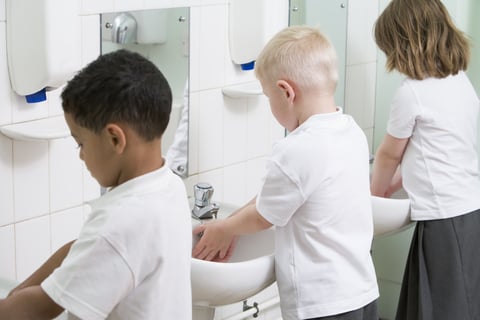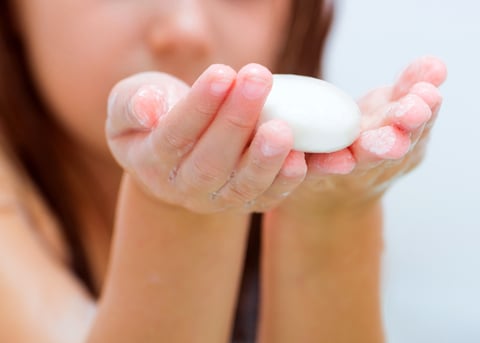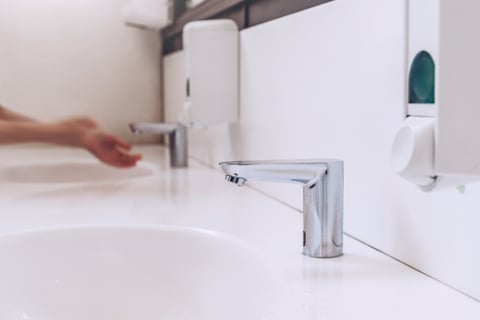
The cleanliness level of a school restroom has been shown to impact the students’ perspectives on the school as a whole — and their decision on whether or not to use the bathroom facilities provided.
For example, if a student perceives the available restroom to be unclean, they may skip handwashing. This may produce a chain reaction and could put the entire school system at risk as germs are spread.
Therefore, maintaining school restroom cleanliness is ultra-important to the overall health of a school system. In this article, we’re diving into the issues associated with typical school bathrooms along with how to address these school restroom cleanliness concerns in simple yet effective ways.
What school restroom health issues exist?
The purpose of a school restroom is clear. These spaces allow students to use the toilet and maintain their hygiene throughout the school day. However, the usage of school restrooms can be interrupted if students don’t feel comfortable using the facilities. In one study, when kids believed their school restroom was not clean, over 60% of those students avoided the school bathroom altogether — despite their need to use the facilities.
In addition, student handwashing is on the decline. In fact, another study indicates only 60% of students wash their hands after using a school restroom. In part, this number can be attributed to school restroom cleanliness. Students indicate that they are less likely to wash their hands when:
- The soap or paper towel dispensers are empty
- The restroom is unclean
- Sinks and other appliances are not operating properly
How to minimize the spread of germs in your school
To decrease the spread of germs and other pathogens in your school, it’s essential to press handwashing, which we discuss in detail in the following section.
On top of washing hands, you can minimize the spread of germs in your school by:
- Disinfecting all restroom surfaces, paying special attention to knobs, switches, and handles
- Covering coughs and sneezes
- Stocking soap dispensers and hand sanitizer stations
- Having a regular maintenance routine
- Getting everyone involved in the cleaning process, especially with classroom cleanliness
- Having accessible wastebaskets throughout the hallways and rooms
How to encourage handwashing in your school

For children to maintain high attendance records, they must be able to make it to school most days. However, when germs spread throughout an academic establishment, attendance numbers tend to fade out. In order to keep students healthy and learning, handwashing must be encouraged.
To foster a positive environment around handwashing, try bringing student awareness to the issue. When kids understand the importance of washing their hands — and the consequences associated with poor handwashing — they may be more likely to complete the task.
Here’s an example: A hygiene promotion program that includes informational posters, class seminars detailing germs and the importance of handwashing, education on the proper way to wash your hands, and more. With this information, students will not only understand how necessary it is to wash their hands, but they will also have a knowledge of how to properly do so.
In fact, it’s recommended that everyone routinely washes their hands properly — with soap and water for approximately 20 seconds. This is imperative prior to handling food, after sneezing, and of course, after using the school restroom.
How sensor faucets can support school restroom cleanliness
Sensor faucets add to school restroom cleanliness. First, these faucets are designed to automatically turn on and off with motion sensors. Therefore, they are not able to be left on, which could lead to restroom flooding. Standard sinks run the risk of overflow as students may forget to turn off the sink before rushing off to class or they avoid touching the faucet switch if they perceive the appliance to be uncleanly. With touchless faucets, this is not a concern. Restrooms remain clean, orderly, and dry thanks to sensor faucets.

Touchless faucets also contribute to school restroom cleanliness by decreasing the number of contact points that could spread germs. Overall, this is a high-tech solution to decrease the transmission of disease beyond the bathroom and throughout the school as a whole.
Finally, many students avoid restrooms and handwashing because they don’t want to touch anything in the school bathroom. With a touchless faucet, this issue disappears.
Additional school restroom sanitation and cleanliness tips
School restroom sanitation and cleanliness should be at the top of every school’s to-do list. A healthy building contributes to student satisfaction and perception of the educational facility. Plus, a healthy school sets students up for success in the classroom. Here are some final cleanliness tips to add to your school’s repertoire:
- Use soap and detergents to disinfect school bathrooms and kill germs.
- Install no-touch garbage bins throughout the school and in all restrooms.
- Discourage vandalism by enhancing school moral and student responsibility.
- Reduce unpleasant odors with proper ventilation.
- Continuously endorse proper handwashing.
Want to keep your school healthy and clean? Visit Chicago Faucets for more information on touchless faucets and other education solutions. We are proud to be the preferred choice of schools for over 100 years. With lasting, reliable, heavy-duty faucets, we are confident in our ability to provide the best products and services to your school — and ultimately contribute to the health of your student body.
.png)

